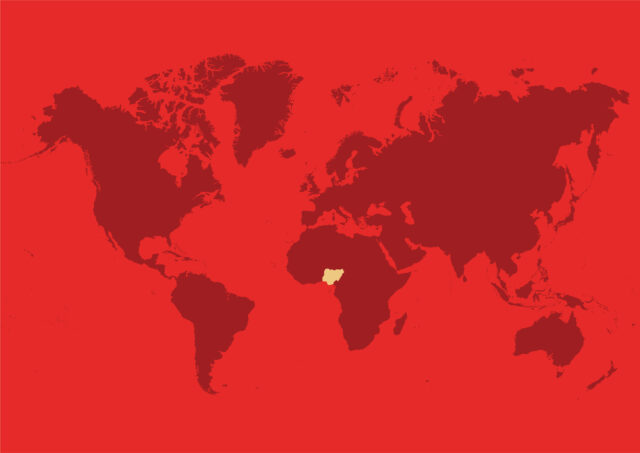The Context
Before we can speak about “Contemporary Nigerian Art”, we must first examine the origins of African Art. Within African Culture, generally speaking, there was no such thing as “African Art”, Art was life and life was art. People lived with art, they breathed art and life was synonymous with art, as it was featured naturally in virtually every aspect of African life; from royal functions to rituals, ceremonies, worship, education, social life to domestic aesthetic use amongst others.
During the western colonial invasion to Africa, many of the continent’s most ingenious art pieces were looted from their “savage owners”, placed in western spaces and then re-branded “Africa Art”.
According to The Metropolitan Museum of Art-New York, African artworks were brought into Europe as early as the fifteenth century and became more appreciated in the late ninetieth century. Western artists had always admired African art for its abstract approach to the human form. It served as a catalyst for innovation to modernist (European) artists. (Khan Academy, 2019).
Western scholars also researched African traditions and art to understand the cultural meanings embodied in the art. Some renowned artists who were inspired by African art styles include Pablo Picasso (Painting: The Dance, 1909) and Henri Matisse (Painting: The Blue Nude, 1907) amongst others.
Modern Nigerian Art
The modern Nigerian art period occurred during the colonial era around the late 19th to 20th-century, (between 1860s-1970 to be specific). At the time, African art was not measured and acknowledged as “real” art, because it was perceived as ‘unnatural’ and very abstract. It was, to the Westerners, “strange and non-artistic”.
As one of the byproducts of colonialization, Africans were taught western art education, while students during this time were taught new techniques and ways to create more natural and realistic art through painting, drawing, and sculpting in the way the world is seen.
However, as time went on, students and artists decided to break away from western art aesthetics and standards, returning to their traditional indigenous ways and forms of art while still using some western mediums and techniques.
In a nutshell, Modern Nigerian art can be described as a fusion of western art techniques with indigenous art styles, forms, and subjects.
Pioneers of the modern Nigerian art movement include Yusuf Grillo, Bruce Onobrakpeya, Ben Enwonwu, Aina Onabolu, Demas Nwoko, Jimoh Akolo, Uche Okeke, amongst others. A few are still alive today and are quite active in the Contemporary art scene.
Contemporary Nigerian Art
After the modern Nigerian art movement came a new period of art called “contemporary art”, commonly referred to as the “Postcolonial Nigerian art”. Mr. Aina Onabolu (The father of modern Art) also referred to it as the “new” or “true” art, and it is currently still the major form of art in Nigeria and Africa to date.
Often times, this category of art requires its creators to have a sort of formal (academic) or informal (workshop-oriented) training system.
The Growth
The African art market is a niche, that mostly the “elite” appreciated back in the days, but we have observed this niche grow due to the awareness from the media, art collectors and an increase in the number of art & cultural events both in Africa and in other continents. This change mostly took a turn in the mid-2000s, after the military rule, when new collectors and art spaces began to surface. Artists also started learning the techniques and styles of previous artists, to redefine their styles, continually evolve and make a mark in the present art world.
The Rise of Contemporary Nigerian Art
Private organizations and individuals have taken it upon themselves to preserve, invest and grow the Arts and Culture Sector in Nigeria without much funding from the Government. Some art galleries and organizations encouraging the African Art scene include Art House Contemporary, Rele Art Gallery, Muson Centre, Nike Art Gallery, Terra Kulture, Omenka Gallery, A White Space Creative Agency and so many more.
The younger generation also has a key role to play in this as we have become more receptive and appreciative towards Nigerian art, thereby creating a better and more supportive atmosphere for the sector.
Most Individuals were not encouraged to study art, music or anything creative. The norm was to study for a white-collar job that will “pay” better than being creative, but this norm is being challenged as the generation has become more aware of the opportunities in this sector while doing what they love.
Also, with the admiration and attention from investors worldwide, the demand for African artworks has skyrocketed and the value of African art has risen by 200% over the last four years (elitelivingafrica,2019). Ben Enwonwu’s 1974 painting, titled Tutu, was recently sold for over $1.6 million in 2018 at a London Auction, while South Africa’s Irma Stern’s painting titled ‘Arab Priest’ sold for £3.1 million by Bonhams in March 2011.
Some globally renowned Nigerian artists who have also established a global footprint include Yinka Shonibare, Otobong Nkanga, Victoria Udondian, Nnena Okeore, Chike Obeagu, Peju Alatise amongst others.
The Future of Contemporary Nigerian Art
Africa’s Art Market still has a lot more room to grow and develop. According to Art-Net, less than 1,000 artworks were sold at auctions in Africa in the first six months of 2019, as Africa still lacks a preeminent art-market capital. Although, Africa’s art market is not as established as some other continents such as Asia, Europe, and America, Africa’s local collector base is growing, as African Buyers (Mostly South Africans & Nigerians) recently dominated the Sotheby’s Modern & Contemporary Art Auction which took place in London.
We are currently also growing more awareness and developing this sector, with the increase of events and art competitions in Nigeria, such as the recent “2050: The Nigeria of our Dreams” Art contest by the NESG in September, the upcoming Arthouse Contemporary Exhibition, Art Summit Nigeria in October and Art X Lagos Arts Fair 2019 amongst others.
The number of art spaces, programs and residencies have also increased, which is new and refreshing to the Lagos art scene. During programs such as the Art House Residency, international artists stay in Nigeria for about three months to gain inspiration, research, reflect and produce artworks outside from their usual working environment, with support from the organization, this shows that art contributes to the tourism sector, and foreign artists also derive inspiration in Nigeria.
In addition, technology has played a huge impact on the growth of art in Nigeria, as it has given artists a lot more access to opportunities (learning, awareness, and recognition), networking, infrastructural adaptations, and collaborations.
Lastly, as the world evolves, so does art trends and messages passed across through them. Artists have become more expressive and are able to depict challenging issues and topics concerning Nigeria and the world as a whole through their artworks. This helps to create increased awareness towards the issue through exhibitions and with the help of social media/ the internet, Nigerian artists are beginning to have more power than we think.
The Nigerian Art Sector indeed has incredible potential and in my estimation, will grow extraordinarily over the next decade.




